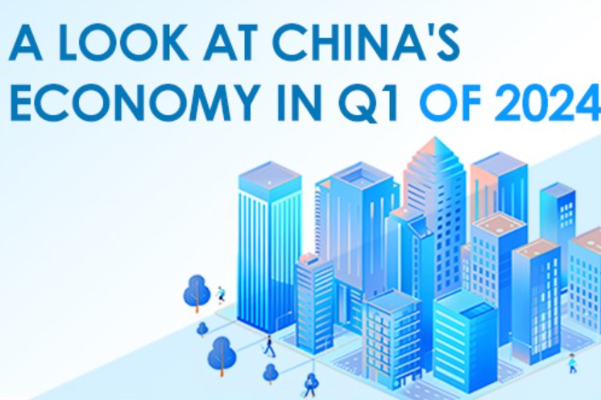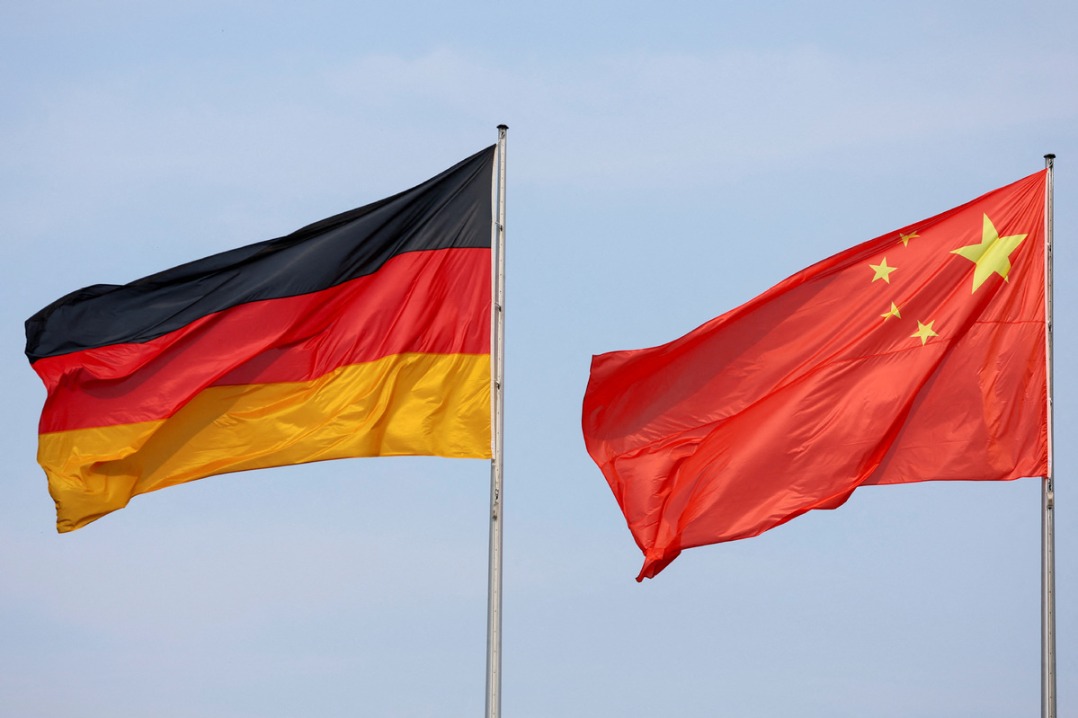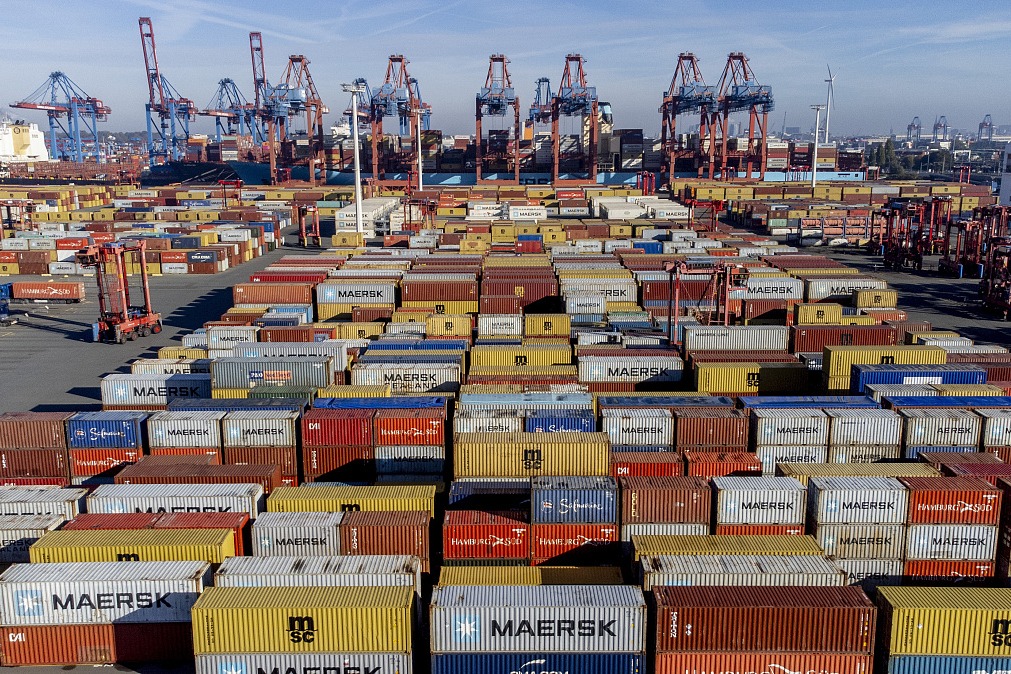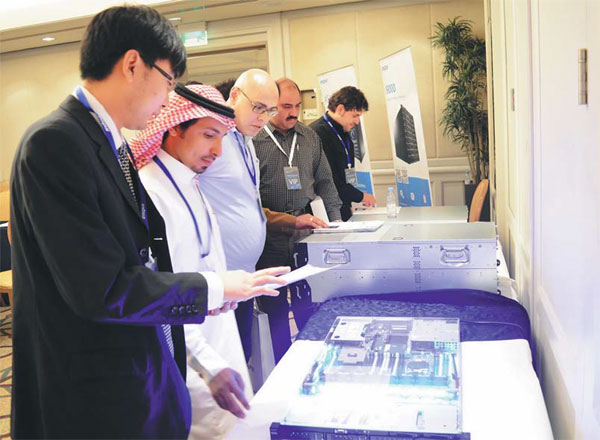Local businesses' investment flows to hotspot destinations

Province steps up to lead intl partnerships, China's 'going global' strategy
At the crossroads of the Silk Road Economic Belt and the 21st Century Maritime Silk Road, East China's Shandong province has been an active player in the Belt and Road Initiative.
Since the initiative was launched in 2013, the province has taken measures to enhance economic and cultural exchanges with countries and regions along the routes, according to local officials.
She Chunming, chief of the Shandong Bureau of Commerce, said: "In recent years, Shandong has implemented a 'going global' strategy, actively taking part in construction in Belt and Road countries and strengthening international investment, trade and industrial capacity cooperation."
| A representative of the Saudi Arabia branch of Shandong-based IT giant Inspur introduces the company's products to Saudi Arabian customers during the Inspur Customer Day in February 2016. Photos Provided to China Daily |
| The Silk Road High-Tech Park Alliance is established in Yantai in July 2016, with members from China, Russia, Belarus, Ukraine, Georgia, Armenia, Kazakhstan and Lithuania. |
"The Belt and Road regions have become hot investment destinations for Shandong's businesses," She said.
The bureau's statistics show that the province's trade with Belt and Road countries and regions amounted to 413 billion yuan ($60 billion) in 2016, growing 8.4 percent from the previous year and accounting for 26.7 percent of the province's total foreign trade.
The Association of Southeast Asian Nations members, Russia and India are Shandong's top three trade partners, with major exports from the province including machinery, electronics, vegetables and metals.
In the first quarter of this year, Shandong's trade with countries and regions along the routes reached 116.4 billion yuan, up 35.3 percent from the same period of last year.
According to She, Shandong has carried out a number of measures to promote cooperation with these countries and regions. It has made concrete progress in such fields as interconnectivity, international industrial capacity, trade and investment, energy, finance and cultural exchanges.
Shandong Bureau of Commerce has arranged a series of trade fairs and exhibitions in Southeast Asia, South Asia, Russia, Mongolia, West Asia, North Africa and Central and Eastern Europe in recent years. A number of agreements have been signed during these events for trade and investment cooperation.
The bureau has also collaborated with overseas trade and investment promotional agencies to facilitate such international cooperation.
The province encourages local construction companies to work with large State-owned enterprises, using their resources in funds, technologies and channels to develop overseas markets.
In April 2016, the province established a database for 210 major projects relating to the Belt and Road Initiative. These include 190 overseas projects, involving total investment of 450 billion yuan and covering such sectors as infrastructure, industrial capacity cooperation, energy and resources, culture, education and finance, as well as ecological and environmental protection.
According to Liang Wenyue, deputy chief of the Shandong Office for Promoting Regional Development Initiatives, the average investment of the 190 overseas projects is 2.3 billion yuan. These include 18 large projects, each with investment of more than 5 billion yuan, mostly in the fields of infrastructure and industrial capacity.
Liang said these overseas projects are mostly in Southeast Asia, Russia and India.
Shandong is also working with overseas partners to build industrial parks in their countries. Among the 20 Sino-foreign cooperative parks recognized by the Ministry of Commerce and the Ministry of Finance, four are backed by Shandong's businesses, including one in Pakistan, one in Russia and two in Hungary.
"These industrial parks will become important platforms for Shandong's cooperation with Belt and Road regions," Liang said.
Outstanding cities
There are several cities standing out in Shandong's coordination with the Belt and Road regions.
Yantai on Shandong's eastern coast was one of the first 14 Chinese cities to open up to the world. It is a pivotal city in the Belt and Road Initiative.
It was elected as one of the "most vigorous cities in the Belt and Road Initiative in 2016" during a forum held in Beijing in January.
"Yantai highlights business links with Belt and Road regions," said Yu Dong, chief of the city's commerce bureau.
He said Yantai has trade and investment ties with 64 countries and regions along the route.
The bureau's statistics show that Yantai's trade with such countries totaled 52.64 billion yuan, accounting for 18.1 percent of the city's total foreign trade volume.
Yantai's businesses have partnered with local companies to build two industrial parks in Russia and Hungary, half of the overseas parks supported by Shandong.
Qingdao is another pivotal city in the initiative.
Based on its advantageous industrial strength, the city has launched 102 projects in Belt and Road countries and regions, with combined investment of $60 billion.
Although an inland city, Linyi has played an important part in the initiative.
Businesses from the city launched a regional wholesale and logistics center in Pakistan in May 2016.
The center will become a distribution hub for products from Linyi and other parts of China to regions including South Asia, Central Asia, the Middle East and North Africa.
Similar facilities are planned in countries and regions like Qatar, the United Arab Emirates, Kazakhstan, Guinea, Uganda and Nigeria.
zhaoshijun@chinadaily.com.cn
(China Daily 05/15/2017 page27)
MOST POPULAR
- 1 Things to know about China Intl Consumer Products Expo 2024
- 2 China tops FDI confidence index of emerging markets
- 3 China specifies steps to improve payment services in tourist attractions
- 4 Low-altitude economy set to take off
- 5 China's immigration service platform receives over 10m calls from home, abroad
Editors' Picks
 Infographic:
A look at China's economy in Q1 of 2024
Infographic:
A look at China's economy in Q1 of 2024
 Infographic:
China to remove foreign ownership restrictions in value-added telecom services in pilot areas
Infographic:
China to remove foreign ownership restrictions in value-added telecom services in pilot areas
 Infographic:
2023 Sino-German investment and trade in numbers
Infographic:
2023 Sino-German investment and trade in numbers
 Infographic:
China-Germany relations in graphic
Infographic:
China-Germany relations in graphic





